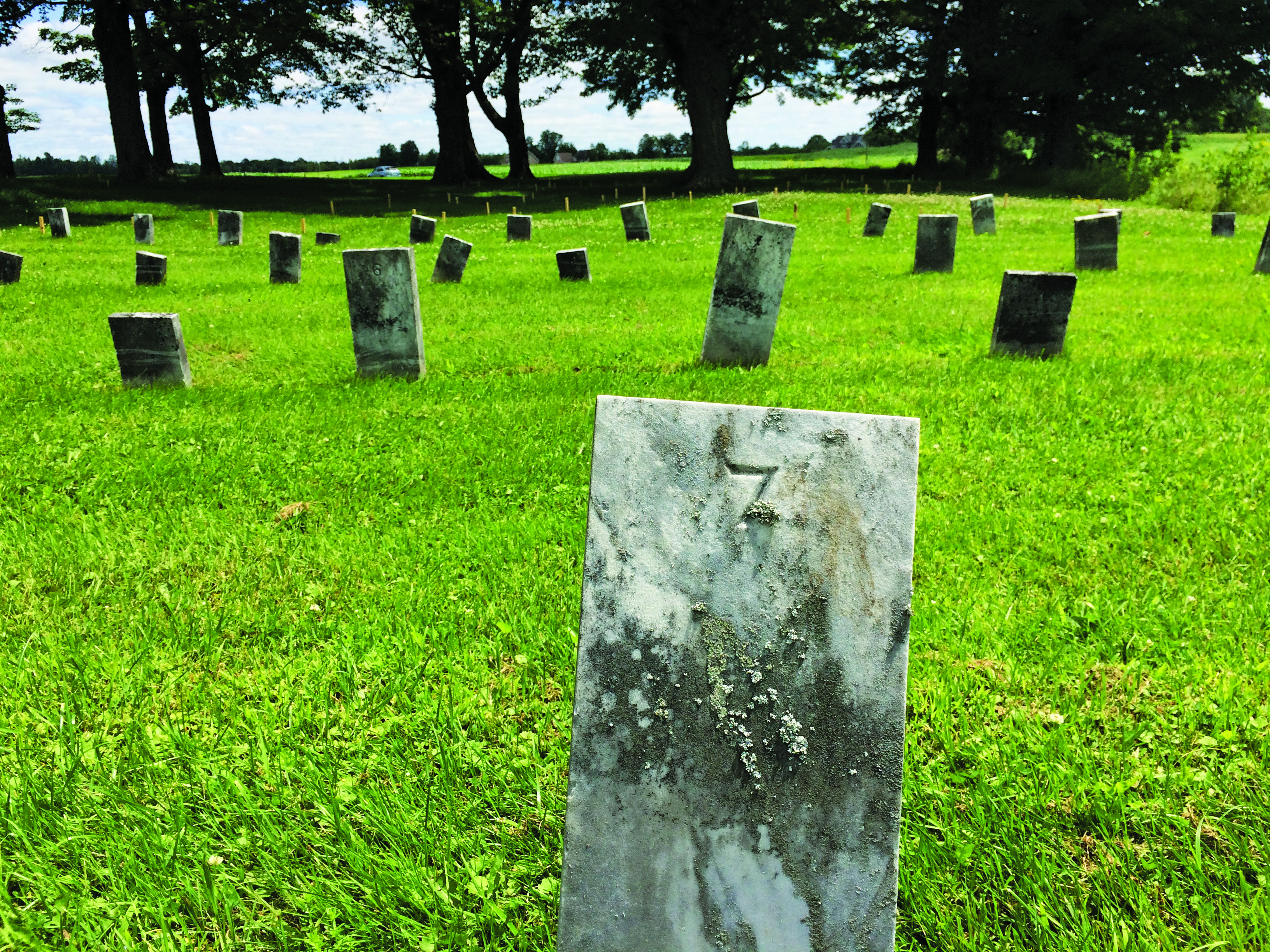A recent presentation given by Dr. Mindy Pitre, Associate Professor of Anthropology at St. Lawrence University, has St. Lawrence county legislators questioning the ethics behind “Death in St. Lawrence County,” (DSLC) a university project that seeks to create a digital archive of over 200 cemeteries across the region. The Canton branch, focused on the research of the Alms House Cemetery, plans to exhume bodies that are in danger of erosion from the Grasse River. Supporters of DSLC have countered that the project is necessary for the protection of those buried and their historical benefits.
The site is located on Route 68, right at a bend in the Grasse River. A cornfield looms behind a small field, and a huge oak tree towers over the field. In 2014, Dr. Pitre was called to the site to examine bones that had emerged on the property. The bones turned out to be from an animal, but evidence of river erosion from the site’s proximity to the Grasse River convinced Pitre that intervention was a necessity.
“We know that ten years ago they found some human remains and then reburied them on the property. So there have been bones eroding out, and if you look at the historical records, and you compare them to the number of people who’re supposed to be here, and these tombstones, there are a couple that are missing,” said Pitre in an interview conducted in 2015.
Over the past three years, St. Lawrence students and professors have been using archival records, ground-penetrating radar, and anthropological research to create a digital record for the Alms House Cemetery. The DSLC website currently contains a timeline chronicling the history of the Canton Alms House and a record of past students who have worked on the project.
Recently, legislators have questioned whether exhuming the bodies might violate the rights of those buried. According to The Watertown Daily Times, David W. Forsythe, a Republican from Lisbon, has expressed the belief that the exhumation process is disrespectful. In the past, Forsythe had proposed a wall be built to protect the site from further erosion, but following a Finance Committee meeting, he did not file a proposal.
Additionally, some community members have questioned the ethics of the project. “By all means, dig up the bodies. Put the skulls on display at St Lawrence University. Serve wine and cheese. The graves are not that old. There will be nothing of substance learned from this. But egos will be stroked, and rich kids from New Jersey will get college credits for doing something really neat,” said a reader at the publications website.
“I understand the concern at first, and it’s a bit shocking if you don’t understand what’s going on,” said Caroline McCarthy ’18, who has been awarded a fellowship to work on the project this summer. “I think there’s a disconnect between the university and the community. Most people don’t understand that we’re trying to correct the mistakes made in the past. Many of these people were buried without a lot of respect. We’re not just exhuming the bodies, we’re reburying them also. It’s a sort of closure,” she added.
Members of the project have added that not only the university will benefit from the research; there are historical benefits to the community as well. “All the information we’re going to get from not only a study of mapping the site, but also gathering historical information about every individual, plus what life was like in the poorhouse itself, and the county farm. It’s kind of shedding light on kind of a forgotten part of Canton’s history,” said Pitre in a 2015 interview.



